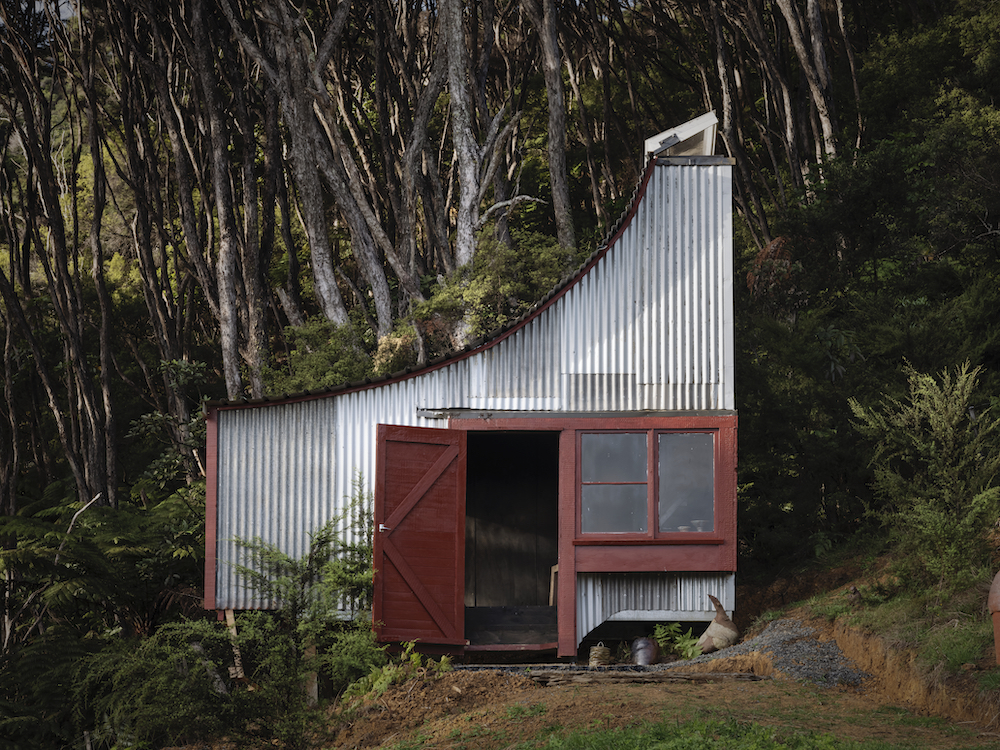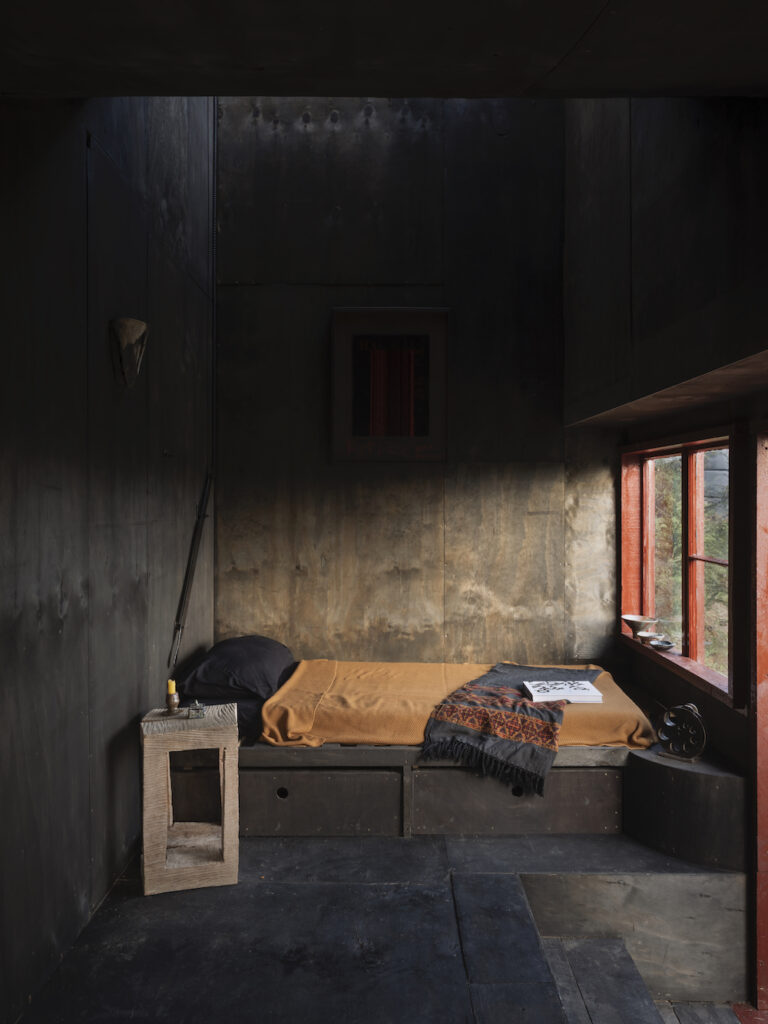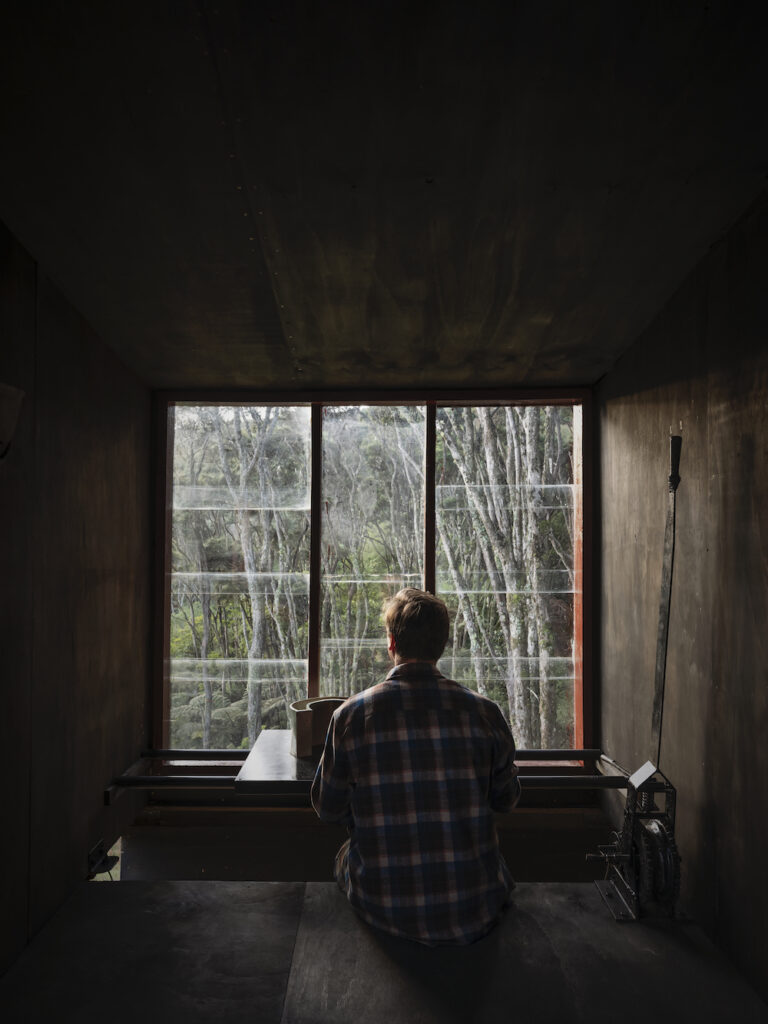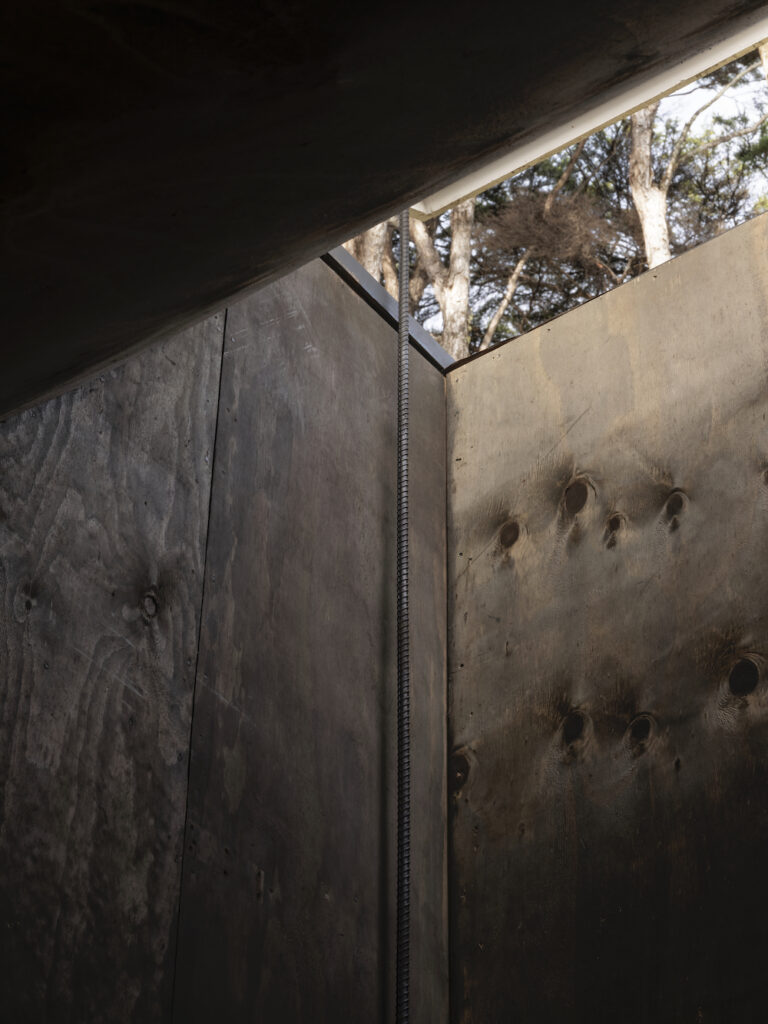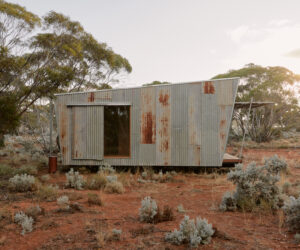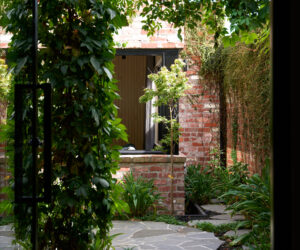Not Wasted: Lost and Found
With constraints at every turn but with a surprisingly collegiate approach, a small cabin made of bits and bobs takes shape.
Wellington-based architect Gerard Dombroski arrived at Driving Creek Railway and Pottery in Coromandel, New Zealand, for a month-long residency with a simple brief: build something using only found materials. Spotting an old steel frame from a disused zipline platform, he saw its potential and began shaping what would become a small and unconventional structure – Picolo Cabin.
With no budget, limited time and only discarded materials to work with, Gerard leaned into the challenge. Foraging became central to the project – many hours were spent pulling apart old structures and scouring the site for timber, steel and other forgotten fragments. Inspired by the sway of the kanuka canopy above and Gerard’s recent photographic study of skateparks, the idea of a room to view the trees came early. The zipline platform provided the cabin’s footprint, while the building’s skate ramp-like curves framed two main views: one upward through a skylight, the other outward across the treetops. Light filtered softly through the canopy, casting patterns across the corrugated steel roof.
Gerard turned glass panes salvaged from an old tram into the front window and built a winch – needed for levering open the roof for ventilation and thermal control – from old train wheel cogs, springs and levers from the site’s stockpile of train parts. To finish off the cladding patchwork, he made a trip to the local tip for some extra corrugated iron. Residency life shaped the build in unexpected ways. Mornings started with coffee in town, where Gerard fielded questions from locals curious about the curvy cabin taking shape. Those same locals would stop by throughout the day, delivering interesting materials and sharing stories about the area. One local artist, Paul Cornwell, regularly dropped into help lift heavy parts into place, and their friendship continues to this day.
Evenings were for connecting and problem-solving. Other artists-in-residence would drop by, rehashing the challenges of the day and offering solutions or commiserations. One, legendary Dutch-Kiwi potter Anneke Borren, even taught Gerard to enjoy red wine, something he had previously never cared for. These moments of camaraderie injected stories into the build – the most powerful tool in any architect’s toolkit.
Picolo Cabin reflects what Gerard Dombroski enjoys most about architecture – projects that demand quick thinking, instinct and a bit of risk. In a build with no budget, few material options and just weeks to complete, a kind of creative chaos took over. As Gerard put it, he became an “architectural explorer of sorts,” testing ideas and letting tight constraints drive his creativity. The resulting cabin proves that with the right approach, scrappy, fast-paced design can produce real magic.
